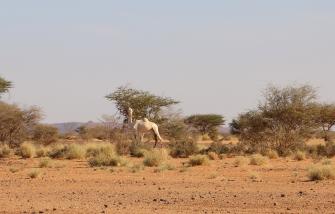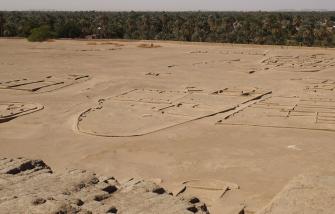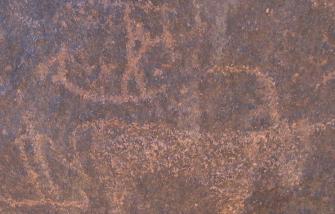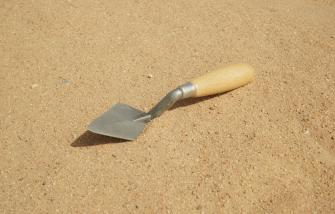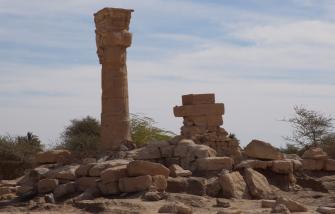The Bayuda Desert is the area south of the Great Bend of the Nile. Archaeological evidence shows that the Bayuda has seen human occupation from the Old Stone Age through almost all periods of history. Read more ...

5000 to 2500 BC
New Stone Age
The New Stone Age, or Neolithic, is the final phase of the Stone Age, starting about 5000 BC. It is characterised by the transition to farming and animal husbandry. In Sudan people cultivated indigenous crops, primarily sorghum. Emmer and barley as well as sheep and goat were introduced as a 'Neolithic package' from the Middle East, through Egypt. Whether cattle was domesticated from a local breed or came as a domesticate from the north as well, is still subject to a fierce academic debate.
The Neolithic people continued to live in small villages. They buried their dead in cemeteries away from the settlements. A new feature of the funerary practice was the introduction of grave goods, which comprised a range of objetcs, including food stuff, pottery, weapons, tools and jewellery. This material eqipment not only illustrates an explosion in everyday objects used by the Neolithic people, it also indicates profound changes in the social structure. While the majority of the burials were without grave goods, a smaller part contained a circumscribed number of objects, and only a few graves were lavishly equipped. The latter included the burial of children, which indicates that status had become hereditary at that time.
While Egypt headed towards becoming the world's first territorial state around 3000 BC, social and economic transformations also changed life in the Middle Nile valley. Evidence from the area of Kerma, above the Third Nile Cataract, also indicates the evolution of a more complex society. The most telling site in this respect is a settlement, which was discovered underneath a later Bronze Age cemetery. Like a proper Neolithic settlement, it consists of circular huts, animal pens and storage pits. But it also includes some rectangular buildings, and it is surrounded by a defensive system of palisades and buttresses made of posts and added-on earth – both of these features can be seen here for the first time in the Middle Nile valley.
